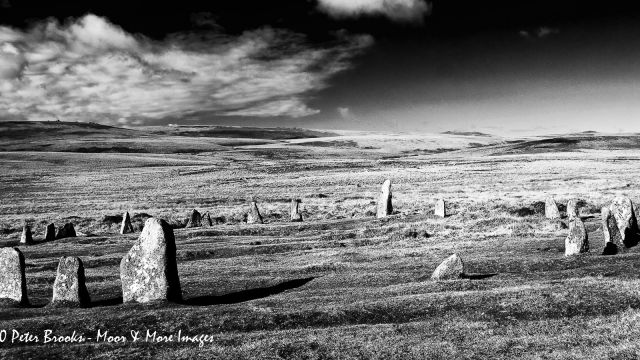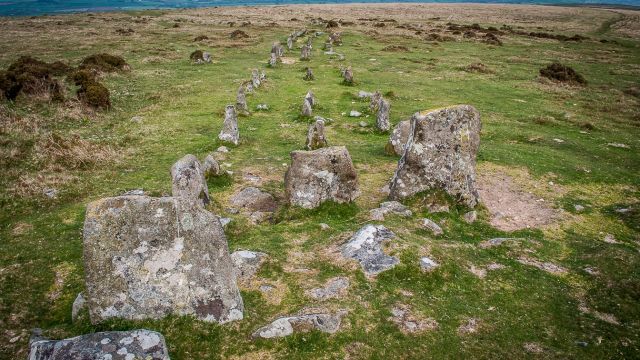Once away from the enclosed land of the Dartmoor fringes, most people’s impression of Dartmoor is of a wild, open and – dare we say – barren expanse. It is hard to imagine that at different times in its past Dartmoor was a much more peopled and busy place than today. From the Bronze Age onwards, there have been periods when Dartmoor had a much larger population than it does now.
If you know what you are looking for, you only have to venture a few yards from most moorland car parks to find evidence of man’s occupation of the moor 4000 years ago. A lot of features are hidden beneath vegetation now. However, there are still very visible remains of settlements in the form of hut circles and enclosure walls. Interesting as these are, they tend not to stir the imagination like the evocative stone circles, stone rows and standing stones (menhirs) that litter the moor.
We can only speculate on the purpose of these artefacts. However, we can all marvel at the effort made by our long-distant ancestors, who erected these complexes with only the most primitive of tools. We should be thankful that so many of them remain for us to enjoy.















